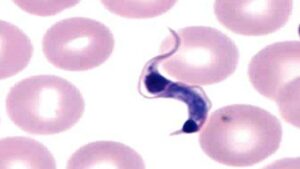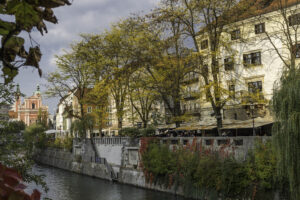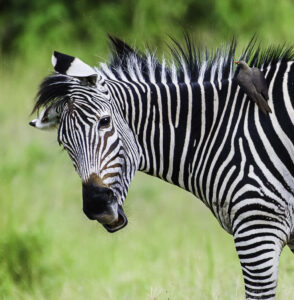When you read this I shall be far away, floating down the Amazon where the piranhas are actually fish. One of the diseases of the Americas that gets very little airplay is Chagas disease, named for the Brazilian doctor, Carlos Justiniano Ribeiro Chagas. With the globalisation of disease, which is impervious to political shenanigans, cases are turning up in Australia. However, while it has the acute manifestation of any infectious diseases, it is the long-term insidious effects on the cardiovascular system.

It is said that Charles Darwin picked up Chagas disease as a young man when he was “Beagling” his way around South America. It would explain why an outgoing young adventurer increasingly became a reclusive invalid as he grew older, never again venturing from Great Britain.
Chagas disease is caused by Trypanosoma cruzi, a protozoa which is carried by a particular bug, commonly called the ‘kissing bug’, so called because of how it cuddles up to you, sucking your blood and letting the protozoa bug into the blood stream. There are drugs to treat the trypanosoma but the course is long and hazardous as one may be strewn with complications.
However, given its insidious nature and that the fact that when backpacking it is romantic to sleep under thatch or in adobe, remember to have that mosquito net, however inconvenient it may be, and a good amount of insect repellent.
The Lancet has said in a sobering statement: “Chagas disease has been considered a neglected disease, without fully effective drug treatment to avoid the chronic stage.”
Australian figures on its prevalence are scanty, but undoubtedly it is there as I noted above. After all, disease is a free market.
I shall keep reminding myself of that as the Amazon drifts by.
Setting down Bores
Charlie McMahon continues his reminisces …
We took the smoothest route via Papunya but that was still a rough corrugated dirt road for 600 of the 750 km drive. There was one lane of good tarred bitumen up the middle of the road so that you drove half on the dirt shoulder when either overtaking or accommodating oncoming traffic.
Near the Mount Zeil plain we came up to overtake a fully loaded “3 dog” road train doing about 90 kmph to our 100. I reckoned it looked safe enough to overtake with the road ahead dead straight. The truckie was not likely to go half on the shoulder to ease our passage and I indicated my intention to pass with high beam flashes and came up beside the road train driving entirely on the shoulder, which slowed us a bit. I was going OK till about a quarter away from passing the road train, a huge hump appeared on the edge of the shoulder, a blasted drainage gully that the dust swirled up by the road train had obscured. I slowed but still hit it at speed. Up and over we went with the load and fellas on the back bounced around. Danger barked, shouts of dismay and Henry with me in the front woke from his snooze looked back and “oh-ho jingiles, lucky one, Murra Hook. They all there still” was all he said. We barrelled on and made to pass the road train again. The truckie congratulated us with the road train horn blaring. “More better I drive ilta” (true questioningly) Henry said. So he took over at the Papunya turn off. Had Henry been driving he would have seen the bump long before I did and we drove on into the night without incident to camp at the halfway point west of Mt Liebig.
On the way the next day we found Freddy West and his family of six camped 100 km before Kiwirrkurra at the Moying Bore near Tjiterong. They were there as an expression of his eagerness to move to Kiwirrkurra, his traditional land. He waved us over, offering a billy of warm sweet tea and put his son Nicholas on board telling him ‘work karriantjku’ (go work with them). Nicholas had been in a lot of trouble sniffing petrol, breaking into places at Kintore – his ability with locks astonished everyone for a child with zero formal education.
On arrival our Kiwirrkurra camp appeared pretty much as we had left it, though the Vinnie’s bag of clothes had been dragged about. “Lotta myall dog been here”, Charlie reckoned and there was much discussion about tracks the crew saw as they gave the place the once over and the first timers showed elation at being on ancestral ground, old hands pointing to and naming places near and distant.
Danger, the dog, got a good sniff of some scent and bolted off not to be seen again till dark. I took a quick shower and said to Henry “you’re next” as well as suggesting to Charlie that since he had been sitting next to Henry for two days he would do well to have one too. I dried off beside the fire as the crew had started. I got out the scabies oil for Henry. As Aboriginals do, he showers with his clothes on. Whether he was shy or just efficient I didn’t bother to ask but handed him fresh clothes from the Vinnie’s bag.
August was perfect work weather. After about two weeks we were well into the job with the four 1x2sq metre-footing holes for the windmill tower legs dug with crowbar and shovel. The John Deer tractor had a bucket and ripper, good for pipeline trenching, and a trailer for carting water and aggregate but without a backhoe for deep holes. The fairly soft soil of Kiwirrkurra made digging easier, which was one of the reasons for choosing the place, so the proper job pit dunny was finished in three days. It was a design called the Blair Ventilated Pit Toilet, shown to me by Steve Pattman at the Centre for Appropriate Technology.
To briefly describe it, a 2 x 2 meter mesh reinforced concrete slab is poured with an off centre “crap hole”, another near the edge for a vent pipe and left to set while the hole is dug 1.8 metres or more deep. The slab is dragged over the hole and the shelter fastened to it with the vent pipe painted dark running up the exterior of the sunny sidewall. An insect mesh cap goes on top of the vent pipe. The dunny building has a hall type entrance to darken the inside so that when you look down into the “crap hole” there’s a circle of light on the bottom of the pit from the vent pipe. Any flies that enter invariably seek the light to leave and drawn by the draft up the sun warmed vent pipe, get stopped at the mesh. Walla! An odourless fly trap and having a proper dunny was a treat for in two years work at Kintore I had to do with a shallow trench – there was always too much to do and the quartz rock subsoil would have been a very hard dunny pit to dig.
We did not listen to the radio so the outside world mattered little. We worked every day and no one bothered with the time or names of days. Sometimes in the evening we turned on the Codan SSB radio tuned into a frequency used by locals, so that the crew would have great fun telling other clans away of the new place they were building. I heard amazing tales of doings in life out there in the days they laughingly called ‘before trouser time’. They would mix up dreaming stories with actual ones and I gave up asking ‘ilta’ (true) ‘did it really happen’ after realising they were often unsure themselves of what was myth and what wasn’t. The young fellas liked to hear Henry’s take on things and looking at the moon one night he asked me to confirm the moon trips “Tjpangarti (my skin name) true int it, some white fella been longa moon, been leave house and car there too”. We cooked and ate together. A coil of black one-inch pipe on the roof of the half walled shed we had built gave us the luxury of warm showers. It pleased me to see the crew (except for Charlie) use them fully dressed so body and clothes got washed in one go. Bathing was not an option for desert people and living around a fire tends to cure or cover their bodies with smoke.
The missing Horse
One reads brochures about Slovenia and they all say you can get horse and foal meat in some of the restaurants. Intriguing, I thought.
Slovenia is a tiny country nestling between Croatia, Italy and Austria, with the Alps forming a crescentic barrier in the north. In the south, Slovenia has a narrow coastline on the Adriatic Sea, with Trieste nearby.
We travelled to Slovenia by car from Venice headed for Ljubljana, the capital of Slovenia. We were told to get a vinjete before the border. This is the only way to pay the road toll in Slovenia (15 euros for a week). We were warned that the Slovenian police wait just across the border, and the fine for not having the vinjete is substantial, 300 euros.
Otherwise the passage across the border is seamless. One moment the signs are in Italian, the next in Slovene – transition from the Romantic to the Slavic.
However we are travelling in a more north-easterly direction towards the capital of Slovenia. Ljubljana is a trap for the new arrival because of its central hill; the tunnel through it, the shortcut to the north but not to the city centre, can fool even the GPS. Ljubljana is one tricky place to navigate, to coin a phrase.
The Antiq Palace Hotel turns out to be a rambling allegedly 16th century building. We are piloted to the room up stairs, via a lift, along a series of corridors bending and twisting until we are on a landing overlooking an internal courtyard. Here we are greeted with music, its source unseen. There is singing, then a horn; a violin struggling to escape; a cacophony of variable quality. Apparently there is a music school in the building on the other side of the courtyard.
The room turns out to be a suite. There is a huge dining room, a lounge area, a bedroom and a bathroom dominated by a huge spa bath. Over the bed in this white painted room was a painting which seemed to indicate that if you had difficulty with nightmares this would ensure you would get one – a weird sylvan scene.
The centre of Ljubljana has been preserved in its pre-World War One architectural attire. Its Austro-Hungarian past is evident in the two-storey houses with gabled roofs, stuccoed walls and large windows lining Ljubljanica River. One early evening when the sky was still blue and the streetlights were lit, you could be forgiven for thinking that this city was the inspiration for Magritte’s series of Dominion of Light paintings.
The problem with the food started on the first night after a meal of kranski and sauerkraut. Whether it was that or a roll I had earlier bought from a motorway food barn, I had a generous bout of food poisoning. I could not blame the horse. My first day in Slovenia thus was spent recovering, but she roamed the streets far and wide, photographing the Triple bridge and beyond.
The narrow Ključavničarska (The Locksmith) Street in the medieval part of the town, connecting Cankarjevo nabrežje (Cankar Quay) with the Mestni Trg (Town Square), contained a surprise. The central gutter was full of bronze heads about the size of billiard balls, most looking at you, as the water trickles over them. Oddball does not do them justice. These are the work of Jacov Brdar, whose work is scattered around the city. It has a Tolkien feel – with the heads looking like members of the Gollum family. They are featured above in the heading of this Blog.
In many ways, walking from bridge to bridge is a reminder of walking along the Seine in Paris, but without the cars streaking alongside.

The river lies just down the hill from the Antiq Hotel and acts as a magnet – so much so that until the last day we did not use the green coloured electric cars, which circle the inner city and are reserved for the disabled and the elderly and their carers. They are called “cavalier”, the name being adapted from the Slovenian for “gentleman”.
On our last night in Ljubljana we used the transport to a traditional restaurant on the outskirts of the old city – the Taverna Tatyana. It was away from the tourists and the bar was full of locals quaffing their beer. It was all brown beams and low ceilings and homely hosts, who spoke passable English. It allegedly had horse and foal on the menu. Not so. Instead they provided a Dalmatian stew and grilled pork with wild mushrooms and after the main course, the magnificent strudel. Slovenian wine is a cheap and good accompaniment as is the complimentary glass of the local honey brandy called medica.
The electric car was there promptly to take us back to the hotel – I wished I had used it more given that my ability to walk was limited –no longer able to roam far and wide. However, the bridge near the hotel was always a site of “a happening” – tonight there was a pumpkin-shaped carriage, which fitted in well with this fairy tale backdrop.
On another night the bridge provided the dance floor for a group of young people elegantly executing the tango. We watched the precisely executed movements while sitting on a granite bench, consuming a cornet of freshly roasted chestnuts.
Yet for all these fairy tale qualities, Ljubljana is a university city. Those walking past are predominantly young and fashionable. The restaurant in the riverfront, overflowing with young people, labelled itself Mexican but the food was “pancake parlour” and the service was poor; yet nobody seemed to care as they oscillated between conversation and iPhone – or just sat, concentrating on their screens, tapping away ensuring future thumb disorders as they decoded life.
The lack of transport and reliance on foot and bicycles accentuates that this is a place for youth. The elderly lady dressed all in white struggling with her bicycle was an exception. She stood out in this world where it was the young who cycled.
We did travel elsewhere – but a full description of our “Cook’s Tour” could well become a Clog. But not a sign of horse on the menu.
When I asked my adviser on Slovenian food about the “missing horse”, he looked at me and asked me whether we had gone to the Tivoli Gardens as he had suggested. Apparently horse burgers are available in the Tivoli Gardens – at least I can confront my vegetarian friends with somewhat of a clear conscience.
But as for the survival of Slovenia, a tiny remnant of the Austro-Hungarian Empire which survived Tito and the break up of Yugoslavia with which it, I am reminded of what that wise observer of human nature, whose writing appears above, Charlie McMahon has said about small countries and survival of language: “Learning a language from a culture where the core practices are gone is really only good for that.” The Slovenes have never let their culture be destroyed, and hence they have a vibrant language with all the blossoms that that will bring.
Still, there is this matter of konjsko meso.
Mouse Whisper
To further annoy the occasional reader of a vegan persuasion, overheard in a restaurant in Swakopmund in Namibia, after perusing the menu she was heard to say, “I think I’ll try the zebra.”

To which the waiter impeccably replied ‘Black or white stripes, madam?”
No, it was not an exchange of hoarse whispers, but in fact it was true, (with apologies to Mr Brydon).
